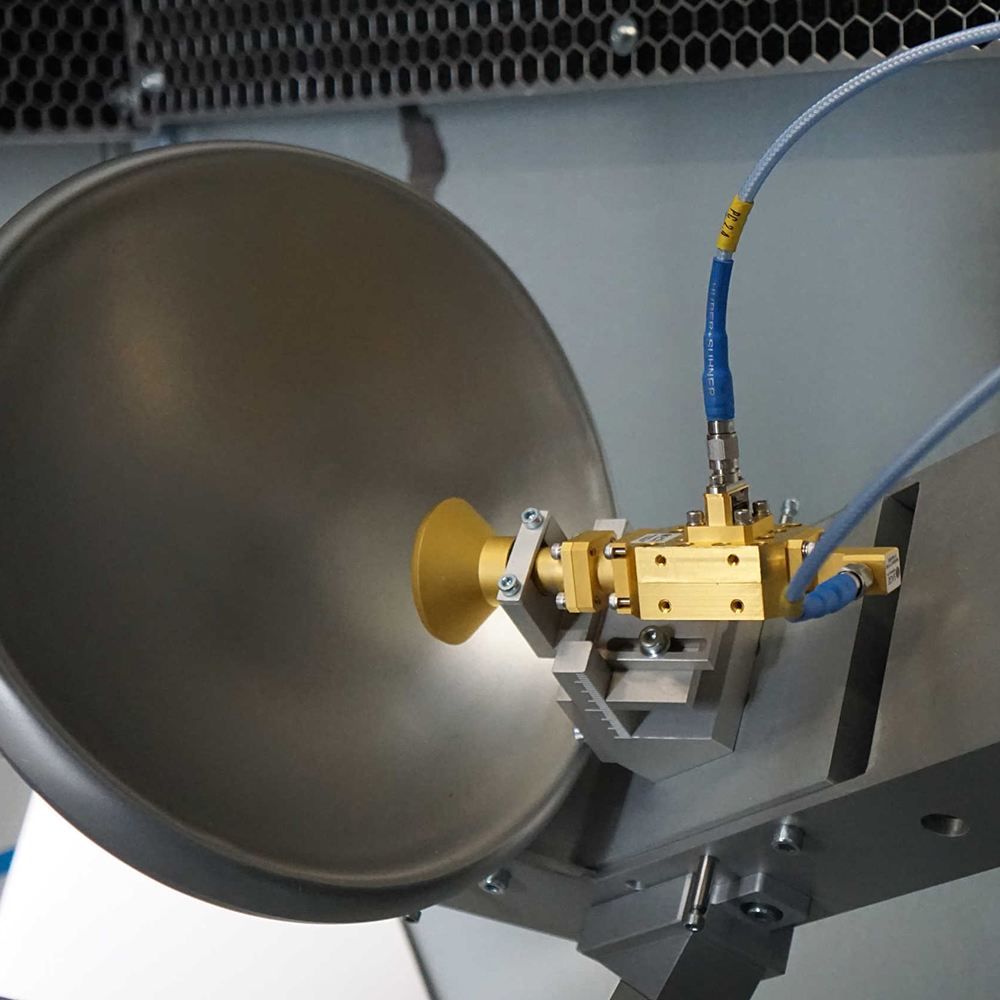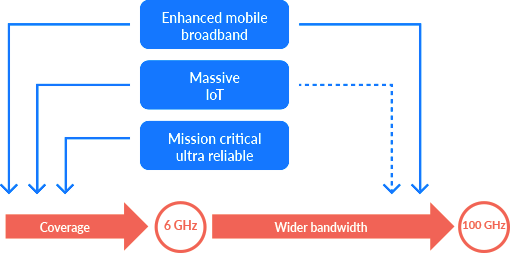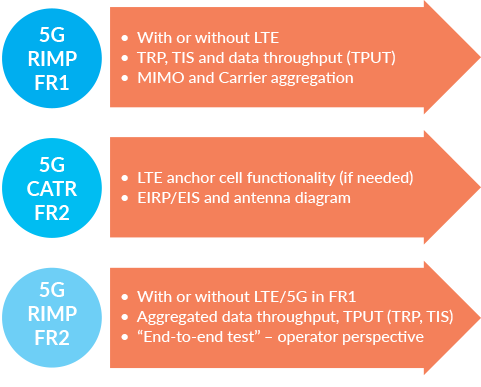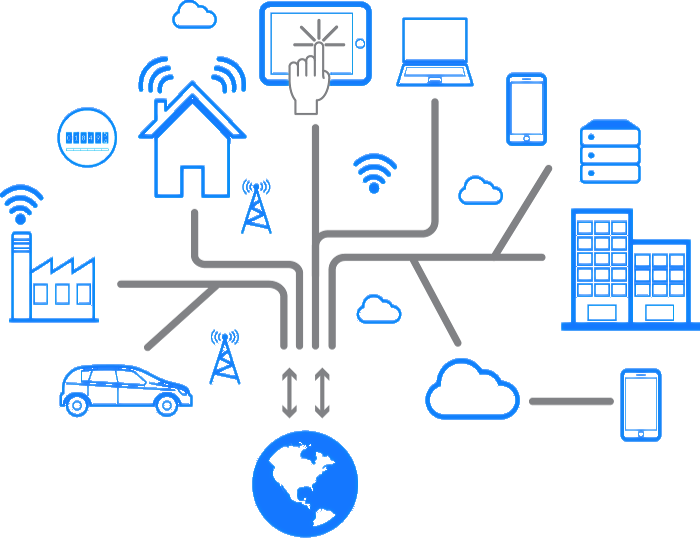5G Exploration and Development

The wireless industry is moving rapidly forward with the deployment of 5G. Bluetest has provided OTA test solutions for 5G since the very start of the 5G development and have a good understanding of customer needs in order to succeed. Our 5G line-up with RTS65 and its 5G extension packages for device testing, as well as RTS85HP for base station testing, is fully prepared to help our customers succeed with the launch of 5G.
5G and the reverberation chamber
Bluetest 5G extension packages are providing comprehensive end-user capabilities that cover directivity, beam steering, dual connectivity, and high frequency, multi-carrier, multi-stream MIMO measurements. Combined with measurement software for the leading 5G communication testers, we have created a complete offering, ready and released to meet the demands of your 5G test requirements.

Higher frequencies
The 5G high frequency extension package with two measurement antennas extends the frequency range from 12 GHz and enables isotropic multipath (RIMP) measurements all the way up to 50 GHz. Efficiency measurements, TRP (Total Radiated Power) and data throughput measurements with 2x2 MIMO are executed just as quickly and easily as in the sub-12 GHz range.
Directivity
With the introduction of higher frequency bands (FR2) also comes a need to introduce device antennas with directivity and beam steering to improve coverage of the cell sites. Directivity and antenna pattern are typically not possible to measure in a regular reverberation chamber. Instead a Compact Antenna Test Range (CATR) is used for these types of measurements. Bluetest has now merged these two test methods into one system, creating a completely unique test solution for a complete evaluation of the 5G device radio performance, hence creating an indispensable tool for the R&D of 5G devices.
A patented, frequency selective, absorber solution maintains the reflective multipath environment in the lower FR1 frequencies while still suppressing disturbing reflections in the FR2 CATR environment. This configuration enables interesting FR1 + FR2 test set-ups and batch measurements. The absorbers are easily removed to restore the reflective environment also in the FR2 bands for fast TRP and data throughput measurements over multiple frequency bands.


More parallel carriers and MIMO-streams
The possibility to over-the-air combine carriers in various frequency bands all the way up to 50 GHz becomes more important with the introduction of 5G and dual connectivity. The Non-Standalone (NSA) 5G NR relies on a sub-6 GHz (FR1) LTE carrier for control and signaling while using the 5G carrier to accomplish higher data rates. Even with Standalone (SA) 5G a FR1 5G carrier can be used to handle the control plane while mmWave (FR2) is used for additional data capacity, combining both a reliable connection and very high data rates.
The RTS65 is available with up to 16 uncorrelated sub-12 GHz measurement antennas. Unified with internal combining options of the communication testers or external combiners, this provide full flexibility for setting up virtually any number of carriers and parallel MIMO streams. These streams can be supported in parallel with the two mmWave streams, allowing, for example, aggregated data throughput measurements on 5CC 2x2/4x4 LTE + 2x2/4x4 5G NR in FR1 + 2x2 5G NR in FR2 as well as a wide variety of other configurations and combinations. Bluetest is fully utilizing the unique capabilities of the reverberation chamber to support multiple streams in multiple frequency bands.
5G base station test
The focus of the 5G offering for Massive MIMO and highly integrated base stations is mainly isotropic power measurements all the way up to 67 GHz. The reverberation chamber here provides measurement speed combined with good measurement uncertainty for all TRP (Total Radiated Power) measurements such as output power, adjacent channel leakage and spurious emission. All these measurements are supported in the RTS85HP.
Looking for more information?

5G - Improving everything
5G introduces a new network architecture to support increased capacity and lower latency. 5G technology should enable a more flexible, reliable, and secure network for everything that will be connected. As we see many diverse use cases, the network needs to respond to combinations of requirements from different application areas. 5G targets improved data rates, much higher data volumes, improved device battery life and increased efficiency in a network with many more connected units. These significant improvements, in nearly every aspect of wireless connectivity, promise a 5G future full of exciting developments.
5G use cases
The objective of 5G is to support a wide range of use cases, each with its own set of system requirements and testing needs. A common denominator is the “Internet of Everything" where more or less everything gets connected. The many use cases imply very different kinds of devices, which can be broadly categorized in three main areas:
Enhanced mobile broadband
Delivering high speed data to many devices at the same time is very much the focus of current 5G introductions. How can device designers and network operators deliver orders of magnitude higher throughput under challenging wireless conditions? As 5G solutions emerge with even higher data rate requirements, we are positioned to explore the effects of these solutions under both simple and challenging wireless propagation environments.
Mission critical ultra-reliable
This is the area where we find vehicle-to-vehicle communication but also other types of devices that require low latency and ultra-reliable/ultra-secure connections possibly combined with high mobility and speed.
Massive IoT
IoT (Internet of Things) type communication where the network needs to handle massive amounts of devices. Each device may not generate a lot of data but will require easy network access with minimum signaling and battery consumption.



